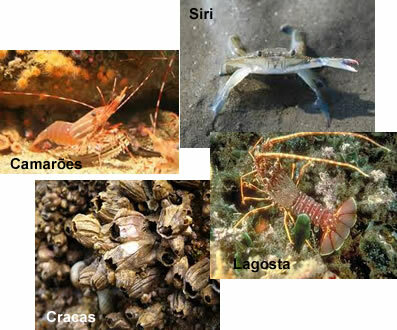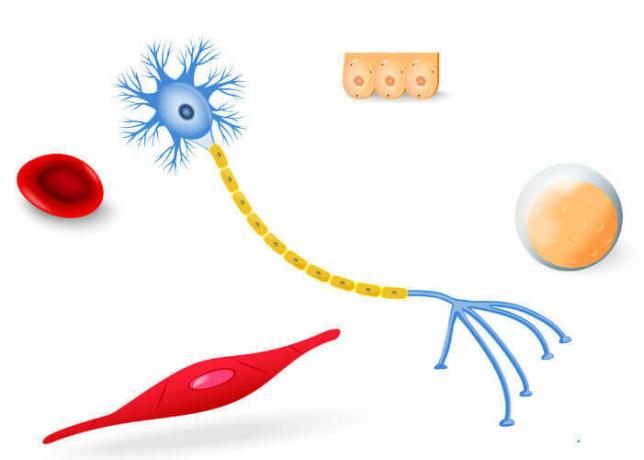Ribosomes are small structures, ranging from about 20 nm to 30 nm, found inside the cells and who act in the production of proteins — a process known as Translation. These structures do not have membranes, and, due to this factor, many authors do not consider them organelles. Other authors, however, call ribosomes non-membranous organelles. Next, we will learn more about ribosomes, their characteristics and their functions.
Also access:Animal and Plant Cells - Characteristics and Differences
Characteristics of ribosomes
You ribosomes they are membraneless particles found in all cell types. They are formed by a combination of proteins and RNA ribosomal (rRNA), which form two subunits. The ribosomes present in prokaryotes tend to be smaller and less complex than those observed in eukaryotic organisms. In the latter, ribosomes are made up of four types of ribosomal RNA and about 80 different proteins.

In eukaryotic cells, ribosomes are formed in the cell nucleus
. rRNA is produced in the nucleolus and proteins, which are part of the ribosome structure, are produced in the cytoplasm. These proteins enter the interior of the nucleus, through pores present in the nuclear membrane, and associate to rRNA. This combination forms the subunits (major subunit and minor subunit), which will form the ribosome.Although the formation of subunits occurs inside the cell nucleus, they do not combine to form the functional ribosome in this region. After graduating, the subunits migrate to the cytoplasm. In the cytoplasm, a messenger RNA (mRNA) molecule binds to the smaller subunit, which, in turn, binds to the larger subunit. At that moment we have a functional ribosome, ready to carry out protein synthesis.
Ribosomes have specific regions that function as binding sites for RNA molecules at the time of protein synthesis. We can observe four distinct regions, one being the site for binding the messenger RNA molecule in the smaller subunit, and three sites in the larger subunit, called the P site, A site, and E site.
The P site is where the transporter RNA (tRNA) is attached to the forming polypeptide chain. At site A, it is possible to observe the tRNA carrying the next amino acid that will be used in the formation of the polypeptide chain. Site E is the exit site, where tRNAs leave the ribosome.

Location of ribosomes in cells
Ribosomes are structures that can be found free in the cytoplasm of cells, being called free ribosomes, or else associated with the membrane of the endoplasmic reticulum and the nuclear envelope, being called linked ribosomes. There are also ribosomes that are found within the chloroplasts and of the mitochondria, being they smaller than the others.
See more: Endosymbiotic theory - how chloroplasts and mitochondria arose in the eukaryotic cell
Importance of ribosomes
As we know, ribosomes are fundamental for protein synthesis, that is, these structures are responsible for producing proteins used in the cell and that will also be secreted by it. In protein synthesis, the ribosome uses the information contained in the mRNA to form a sequence of amino acids that will form proteins.
As an mRNA molecule travels along the ribosome, the codons (three-fold nucleotides) are translated into amino acids. This translation takes place thanks to tRNA molecules, which are responsible for adding amino acids to the chain in formation. The protein synthesis process involves three basic steps: the beginning, the elongation and the end.
As the step names indicate, the initiation step is characterized by the formation of the functional ribosome and the initiation of synthesis. In the elongation phase, we see chain growth due to the addition of amino acid. And finally, in the termination step, nucleotide sequences indicate that the synthesis must be completed and releasing factors act in the process.
know more: Transport through membrane - types: passive and active
In cells with high metabolic activity, this production occurs more intensely. In these cases, it is observed that the ribosomes form polyribosomes, which are nothing more than the grouping of several ribosomes synthesizing several molecules of protein based on the same messenger RNA molecule.



